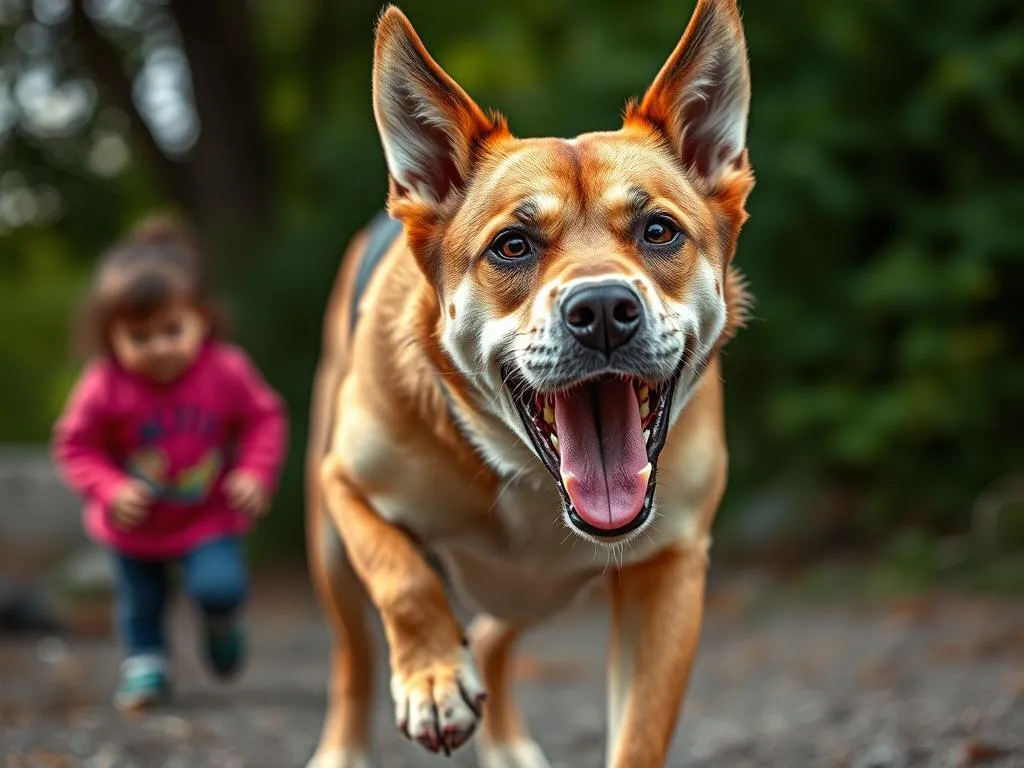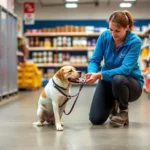
Introduction
Dog aggression toward children is a serious concern for many dog owners, especially those with young kids. Dog aggressive toward children can manifest in various ways, ranging from growling and snapping to more severe behaviors. Understanding and addressing this issue is crucial not only for the safety of children but also for the wellbeing of the dog. In this article, we will explore the nature of dog aggression, identify triggers, recognize signs, and provide effective training strategies to manage and reduce aggressive behaviors.
Understanding Dog Aggression
Types of Aggression
Understanding the different types of aggression is essential for dog owners to effectively manage their pets.
Fear-Based Aggression: This type arises when a dog feels threatened or scared. Dogs may perceive children as unpredictable, leading to aggressive reactions as a defense mechanism.
Protective Aggression: Some dogs instinctively protect their family, including children. While this behavior can be beneficial, it may become problematic if it leads to aggression.
Territorial Aggression: Dogs can become territorial over their space, which may include their home and family members. Aggression can occur when children invade this space without proper introductions.
Play Aggression: Dogs, especially puppies, may exhibit aggressive behaviors during play. This can be misinterpreted and may pose risks, particularly with small children.
Frustration-Induced Aggression: Dogs that are restrained, such as on a leash, may become frustrated and act aggressively, particularly when they see children running around.
Common Triggers for Aggression Toward Children
Understanding what triggers aggressive behavior is vital for prevention.
Sudden Movements: Children often move unpredictably, which can startle dogs and lead to aggressive reactions.
Loud Noises: Shouting or high-pitched noises can alarm dogs, causing them to react aggressively.
Invasive Touching or Approaching: Children may not always understand how to approach dogs safely, leading to invasive interactions that provoke aggression.
Resource Guarding: Dogs may become aggressive if they feel their toys or food are being threatened or taken away by children.
Recognizing Signs of Aggression
Body Language Indicators
Recognizing the subtle signs of aggression can help prevent incidents before they escalate.
Growling and Snapping: These are clear warnings that a dog is feeling threatened and may bite if provoked further.
Baring Teeth: This behavior indicates discomfort or aggression and should never be ignored.
Stiff Body Posture: A tense body can signal that a dog is on high alert and may react aggressively.
Ears Back and Tail Position: A dog with ears pinned back and a low or tucked tail is often frightened and may lash out if they feel cornered.
Behavioral Signs
In addition to body language, specific behaviors can indicate aggression.
Increased Barking: Excessive barking can signal a dog’s discomfort with a situation, potentially leading to aggressive behavior.
Avoidance or Hiding: If a dog is consistently avoiding children or hiding, it could indicate fear that may result in aggression if the dog feels trapped.
Sudden Aggressive Outbursts: Abrupt changes in behavior can signal underlying issues that may need to be addressed.
Assessing the Situation
Evaluating the Dog’s Behavior
To effectively manage aggression, it’s essential to assess both the dog’s and child’s behavior.
Identifying Triggers: Keeping a diary of incidents can help owners recognize patterns in aggressive behavior and identify specific triggers.
Understanding the Context: Analyze when and where aggression occurs. Is it during playtime, meal times, or after sudden movements? Identifying the context can provide insights into how to manage the situation.
Assessing the Child’s Interaction
Children must be educated about appropriate interactions with dogs.
Teaching Appropriate Behavior to Children: Children should learn how to approach dogs calmly and respectfully. This includes asking permission to pet and avoiding sudden movements.
Parental Supervision: Consistent adult oversight is crucial to ensure that interactions between dogs and children are safe and positive. Adults should intervene if a child behaves in a way that could provoke aggression.
Training Techniques to Manage Aggression
Basic Obedience Training
One of the foundational steps in managing aggression is teaching basic commands.
Commands to Teach: Training commands such as Sit, Stay, Come, and Leave It can help establish control over the dog during potentially aggressive situations.
Positive Reinforcement: Rewarding good behavior with treats and praise encourages dogs to repeat desirable actions and can help reduce aggression over time.
Desensitization and Counter-Conditioning
These techniques are effective in addressing fear-based aggression.
Gradual Exposure: Introduce the dog to children in a controlled environment, allowing the dog to become accustomed to their presence slowly.
Positive Association: Pairing the presence of children with positive experiences, such as treats or playtime, can help the dog associate children with good feelings rather than anxiety.
Behavior Modification Techniques
Behavior modification is crucial for redirecting aggressive tendencies.
Redirecting Aggressive Behavior: Use toys or distractions to divert the dog’s focus when they show signs of aggression. This can help them associate positive experiences with children rather than conflict.
Controlled Socialization: Arrange supervised playdates with calm, well-behaved children to help the dog learn appropriate behaviors in a safe environment.
Professional Help
When to Seek a Professional Trainer
There are times when professional intervention is necessary.
Signs that Intervention is Needed: If the aggression escalates, or if training efforts seem ineffective, it may be time to consult a professional.
Choosing the Right Trainer: Look for trainers with experience in handling aggressive dogs. Certifications from recognized organizations can also indicate a trainer’s credibility.
Possible Behavioral Therapies
Sometimes, addressing aggression requires more than just training.
Consulting a Veterinarian: Medical issues can sometimes cause aggressive behavior. A veterinarian can rule out any underlying health problems.
Therapy Options: Behavioral modification programs may be available through trainers or veterinarians, and medications may be prescribed in severe cases of aggression.
Prevention Strategies
Early Socialization
Preventing aggression begins in puppyhood.
Importance of Socializing Puppies: Exposing puppies to various people, including children, helps them develop a well-rounded temperament and reduces fear-based aggression.
Safe Playdates: Ensure that interactions with children are controlled and supervised to promote positive experiences.
Ongoing Training and Reinforcement
Training shouldn’t stop once basic commands are learned.
Regular Training Sessions: Consistent training helps reinforce good behavior. This can include refreshing commands and practicing new skills.
Continuous Monitoring: Keep an eye on the dog’s behavior over time. Changes in behavior can signal underlying issues that need to be addressed promptly.
Conclusion
Understanding and managing dog aggressive toward children is essential for ensuring a safe and harmonious home environment. By recognizing the signs of aggression, assessing triggers, and implementing effective training techniques, dog owners can significantly reduce risks and promote positive interactions between dogs and children. With patience, persistence, and the right strategies, it is possible to manage aggression effectively and create a peaceful coexistence between dogs and the little ones in our lives.









